The Tastiest Recipes with Pork Meat. 100% Modern Cooking with Precious Info!
Recipes with pork are very followed due to the special aroma offered by this kind of meat. Did you know that every recipe can include almost all types of meat, but the taste and flavor of the dish change dramatically? That’s why 94% of my recipes require only one type of meat, and I do not recommend very often to change it. Following Susan Dale’s cookbook & recipes with pork (cookafterme.com), there are a lot of interesting dishes that you should try (e.g. with pork meat). I will post here the best of them!
1. Teriyaki Pork Tenderloin – the best of!
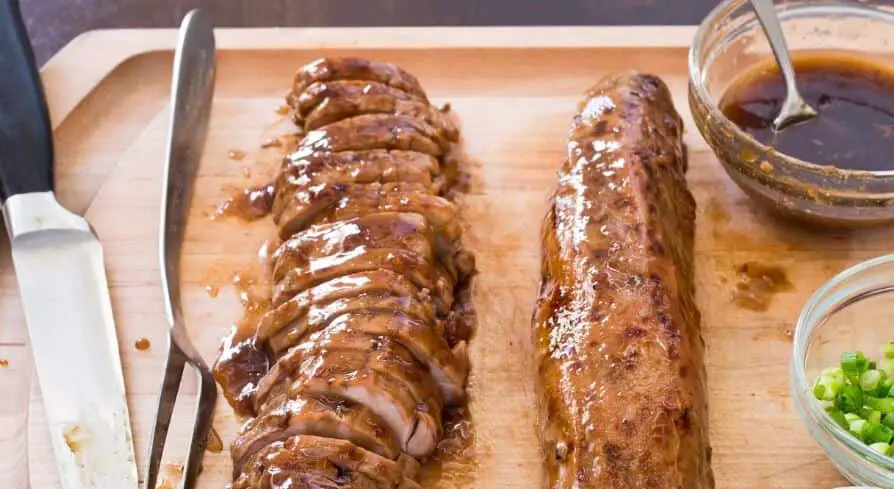
For me, pork tenderloin with teriyaki or soy sauce is one of my favorites. If you didn’t try this Japanese dish, I strongly recommend you to “taste the heaven“! If you’re looking for protein-rich meat for your diet, or if you simply want healthy meat, teriyaki pork tenderloin is one of the best choices. It’s low-fat, high-protein and also is a great source of B vitamins and selenium.
2. Penne Pasta with Pork Meatballs
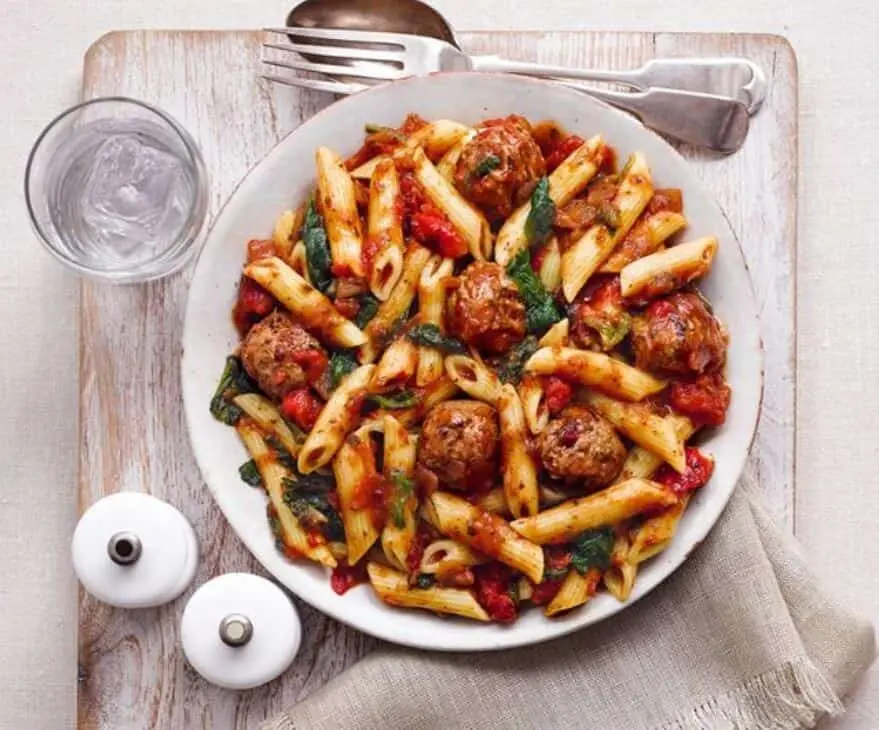
Why would Italians choose pork instead of any other kind of meat? Well, this recipe is a hybrid type from Italian-American cuisine, and has an incredible taste. In Italian restaurants across the country (USA), meatballs in tomato sauce are standard fare, so students are already familiar with these flavors. Penne with Pork Meatballs provides a good opportunity to use commodity pork and tomatoes in combination with fresh kale, to prepare a made-from-scratch entrée.
3. Pork Chops with Orange Glaze
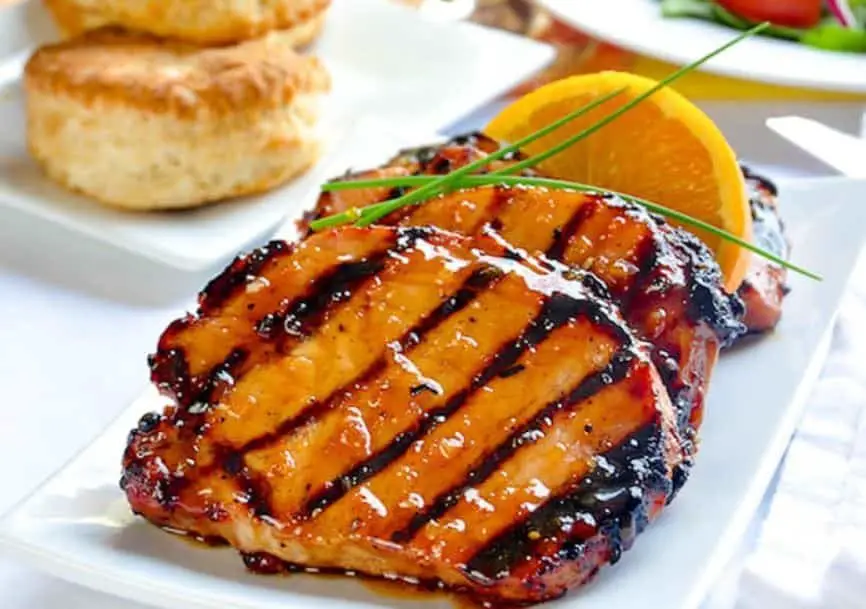
Pork chops with orange glaze are a great way to serve your guests for any special occasion. Let the guests taste this divine special prep and congratulate you. Pork Chops with Orange Glaze is one of the best recipes I’ve ever ate. Not very hard to prepare, the orange-glazed pork chop is a dish you need to cook at least once and be amazed by its flavor.
4. Barbeque Pork Ribs & Spicy Sauce
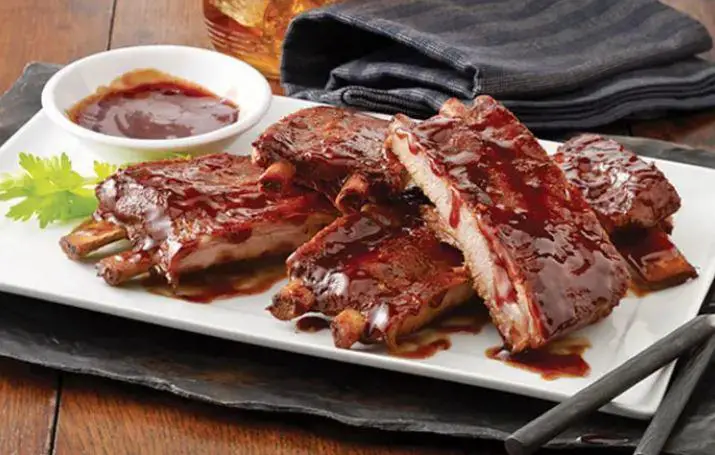
Barbeque Pork Ribs with Spicy Sauce is a great alternative to the usual pork recipes. Before I’ve written this recipe, I prepared this awesome dish.. Lovely is a small word compared with the flavor of these ribs. Simply Yummy!
5. Fried Broccoli, Pork & Rice
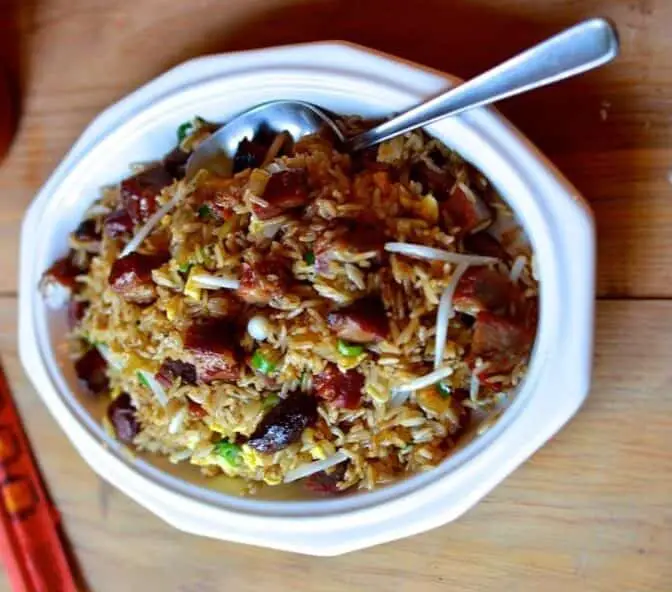
What can be better than the delicious pork meat with Broccoli and rice? Nothing. This is the perfect combo if you want a full meal with great flavor and one that keeps you full for longer! Save a few minutes by buying broccoli at the salad bar. It’s already cut up, and you can buy only what you need.
Is pork good for you?
Pork is the tastiest kind of meat worldwide, known since 5000 B.C. This meat has a great taste and flavor and is preferred by most for special occasion meals. The pork meat is high in protein, vitamins, minerals, and amino acid which offer a great benefit for overall health. When trimmed of visible fat, lean pork is nutrient-dense, satisfying, and very good for you and your brain (especially). Some pork meat parts like tenderloin, loin chops, and sirloin roast are made from lean cuts and are more healthy than chicken. In some cases, pork can be a healthier choice even though it has higher fat content because has larger amounts of healthy fats, like polyunsaturated fatty acids, compared to other types of meat.
As per practo.com, the truth is that the pork meat is very healthy. “It is high in protein and essential vitamins, minerals and amino acids good for overall health. Lean pork, when trimmed of visible fat, is nutrient-dense, satisfying, and good for you.“
Why is pork better than chicken?
The leanest cuts of pork are actually lower in calories than chicken. “Ounce for ounce, lean cuts of pork have the same amount of or fewer calories than chicken, and fewer calories than lean cuts of beef,” Cara Harb street, M.D., R.D., L.D. of Street Smart Nutrition, tells SELF. It is a powerhouse of essential vitamins and minerals — just three ounces of cooked lean pork covers you for more than a third of the daily requirement for thiamin, niacin, selenium, and vitamin B6. Plus, it is rich in vitamin B12, potassium, iron, magnesium, and zinc.
Pork Cuts
Pork is the most widely consumed and versatile protein in the world; it’s easy to cook, adaptable to just about any recipe, and very tender and juicy. Let’s see what are the types of pork cuts:
Bacon
The cut used to make bacon comes from the side — or belly — of the pig. When it is cured and smoked, it becomes bacon. An abundance of fat gives bacon its sweet flavor and tender crispiness. Bacon is typically sold in slices. Bacon may be packaged in thin slices (about 35 strips per pound), regular slices (about 16-20 strips per pound), or thick slices (about 12-16 strips per pound). Bacon also may be available in slab form, which is one solid piece. Slab bacon usually comes with a rind that is meant to be removed before slicing. Fried, diced bacon rind is known as cracklings.
Pork Chops
Pork chops are the most popular cut from the pork loin, which is the strip of meat that runs from the pig’s hip to shoulder. Depending on where they originate, pork chops can be found under a variety of names, including loin, rib, sirloin, top loin, and blade chops.
Pork Belly
Pork belly comes from a hog’s ‘belly’ or underside after the loin and spareribs have been removed. This boneless cut may be served fresh, which means it is not cured or smoked. Fresh pork belly is succulent and richly flavorful and is often served in small portions. Pork belly is at its best and is most tender when prepared using a slow cooking method, such as braising. Pork belly also is a popular menu item among restaurant chefs who appreciate its versatility, flavor, and texture.
Pork Steak
A Pork blade steak comes from a roast cut that’s been sliced. Blade steaks (also called pork steaks) are cut from the pork shoulder and contain the blade bone. Blade steaks are flavorful like roasts because they are rich in marbling, which keeps them tender during cooking. Blade steak is a popular, quick-cooking cut for grilling. Do not overcook pork or it will become dry and tough.
Ground Pork
Ground Pork is pork that has been ground or finely chopped. It is unseasoned and usually is available fresh with an average lean-fat ratio of 70 percent lean, 30 percent fat. Cook Ground Pork to 160° F to ensure doneness. Common cooking methods for Ground Pork include grilling and sauteing.
Ham
Ham typically refers to meat from the hind leg that has been either wet-cured or dry-cured and often is smoked. When serving a bone-in ham, plan on two to three servings per pound. Arrange the ham slices, separate from the bone, on a serving platter. Popular methods for cooking ham include roasting, slow-cooking, and grilling. The simplest way to cook your ham is in the oven on 350° F for about 10 minutes per pound.
Loin Roast
The loin roast comes from the area of the pig between the shoulder and the beginning of the leg It is sold either bone-in or deboned. Loin roast can be rolled and tied with string. Loin roasts with a bone tend to be juicier and more flavorful, but the bone can make carving a bit tricky. Loin roast is sometimes confused with tenderloin. Despite the name similarity, they are not one in the same. A loin roast is typically sold in pieces weighing between two to four pounds (the tenderloin is a smaller, long cut that usually weighs about a pound). The term roast simply refers to a large cut of pork.
Pork Rib Roast
The pork rib roast/rack of pork is the pork equivalent of a standing beef rib roast or a rack of lamb. For reference, a pork rib roast/rack of pork is a simpler version of a pork crown roast, which is a pork rib roast/rack of pork tied into a circle. This cut makes a show-stopping centerpiece for an elegant dinner. Pork rib roast is not always available in the supermarket meat case, but you can easily order it ahead of time. Before roasting or barbecuing the pork rib roast, it should be “frenched.” Simply cut the meat away from the end of each rib, so that part of each bone is exposed. A butcher at the meat counter also can do this for you.
Sausage
Sausage is a highly versatile type of ground pork. Supermarkets offer a variety of pre-seasoned and ready-to-cook options that are perfect for breakfast or the grill. Adventurous home cooks also may choose to prepare homemade sausage by combining ground pork with their choice of seasonings. Pre-seasoned ground pork can come fresh, smoked, or cured and available in links, patties, or fresh bulk. There is also a wide range of ethnic varieties. Sausage has the capacity to blend well with a variety of herbs, spices, fruits, and vegetables. Different ingredient combinations also yield ethnic sausage varieties, including Andouille (French/Cajun), Bratwurst (German), and Chorizo (Mexican and Spanish).
Shoulder
Pork shoulder is the top portion of the front leg of the hog. The terminology for pork shoulder can vary widely depending on the region. However, the lower ‘arm’ portion of the shoulder is most commonly called the arm pork roast. The upper part of the shoulder, often called the blade pork roast, comes from the area near the loin and contains the shoulder blade bone.
The blade roast is a well-marbled cut. This versatile cut can be pot-roasted whole, cut up for stews, or cooked over moist smoke in a smoker to transform it into classic pulled pork barbecue. Whether it is roasted, braised or barbecued, the blade roast becomes meltingly tender and deliciously flavorful. This inexpensive cut may need to be pre-ordered. You also may wish to have the meat trimmed and netted so that it remains intact as it cooks to fork-tenderness. The blade roast is available bone-in, averaging six to nine pounds) or boneless (averaging four to seven pounds). Pork shoulder also is often ground for use in making ground pork.
Ribs
There are a variety of types of pork ribs that vary in size, flavor, and meatiness depending on what part of the pig they come from.
- Back Ribs: Back ribs come from the blade and center section of the pork loin, which is known for the “finger meat” between the bones. Back ribs also are referred to as “baby” back ribs because they are smaller than spareribs. A rack typically weighs between 1½ and 1¾ pounds. Popular cooking methods for back ribs are BBQ, roasting, and slow-cooking.
- Spareribs: Spareribs come from the belly of the hog and are known for their delicious, full flavor. These ribs are a bit less meaty than back ribs or country-style ribs. Spareribs are typically larger and heavier than back ribs. St. Louis style ribs are spareribs with the sternum bone, cartilage, and rib tips removed to create a rectangular-shaped rack. These often are the best type of ribs for recipes that require browning in a frying pan because the ribs are straight and flat.
- Country-style Ribs: Country-style ribs are cut from the sirloin or rib end of the pork loin. The meatiest variety of ribs, country-style ribs are sold either as “slabs” or in individual servings. These pork ribs are perfect for those who want to use a knife and fork. Popular cooking methods for country-style ribs include grilling and roasting. These ribs are great for marinades and sauces.
Tenderloin
Pork tenderloin makes an elegant entree for a small dinner party but also can be roasted or grilled whole for a quick weeknight dinner. When sliced crosswise (like a loaf of French bread), the resulting medallions also may be sauteed. Pork tenderloin has a mild flavor, so it’s best when prepared with an added spice rub, marinade, stuffing, or flavorful sauce. To keep the tenderloin juicy, cook to an internal cooking temperature of between 145° and 160° F, followed by a 3-minute rest.
Wrapping Up
No matter what recipe will choose from Susan’s cookbook, you should know that all her recipes are awesome. As a tip, choose fatless (or almost) pork loin for a greater health benefit, especially if you follow a diet.








